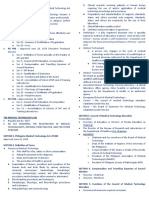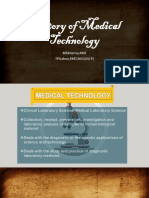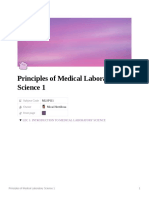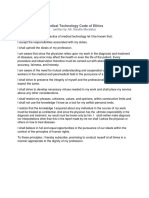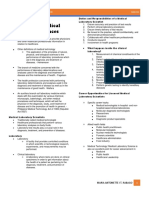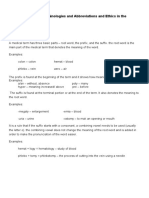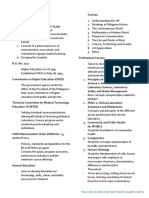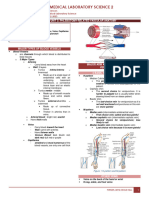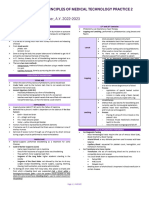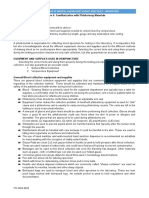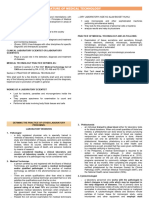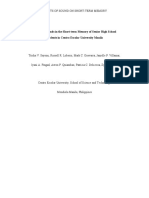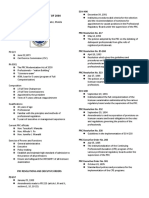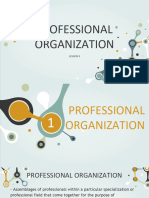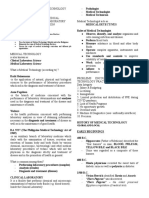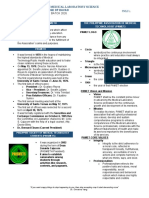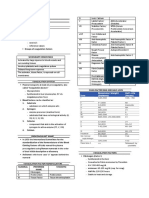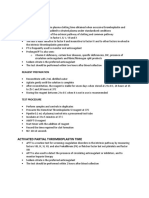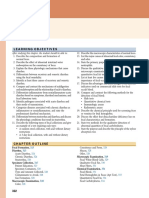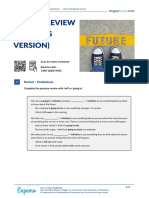0% found this document useful (0 votes)
686 views13 pagesEarly Beginning of Medical Technology: Vivian Herrick
Medical technology began developing thousands of years ago with early observations and descriptions of illnesses and bodily fluids. Key developments included Hippocrates describing the four humors in 460 BC, ancient Hindu physicians noting the sweet taste of diabetic urine, and the Ebers Papyrus containing early descriptions of diseases. Urinalysis was used as an early diagnostic tool. Major advances occurred with the invention of the microscope in the 1600s allowing the discovery of cells and microorganisms, and the development of staining techniques like Gram staining in the 1800s. The first clinical laboratories were established in the late 1800s in the US and early 1900s which standardized laboratory testing and trained medical technologists. The field grew rapidly in the 1900s with advances in
Uploaded by
Who KnowsCopyright
© © All Rights Reserved
We take content rights seriously. If you suspect this is your content, claim it here.
Available Formats
Download as PDF, TXT or read online on Scribd
0% found this document useful (0 votes)
686 views13 pagesEarly Beginning of Medical Technology: Vivian Herrick
Medical technology began developing thousands of years ago with early observations and descriptions of illnesses and bodily fluids. Key developments included Hippocrates describing the four humors in 460 BC, ancient Hindu physicians noting the sweet taste of diabetic urine, and the Ebers Papyrus containing early descriptions of diseases. Urinalysis was used as an early diagnostic tool. Major advances occurred with the invention of the microscope in the 1600s allowing the discovery of cells and microorganisms, and the development of staining techniques like Gram staining in the 1800s. The first clinical laboratories were established in the late 1800s in the US and early 1900s which standardized laboratory testing and trained medical technologists. The field grew rapidly in the 1900s with advances in
Uploaded by
Who KnowsCopyright
© © All Rights Reserved
We take content rights seriously. If you suspect this is your content, claim it here.
Available Formats
Download as PDF, TXT or read online on Scribd
/ 13


